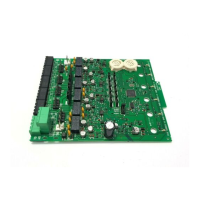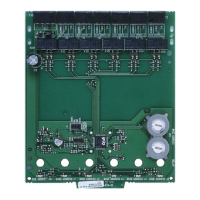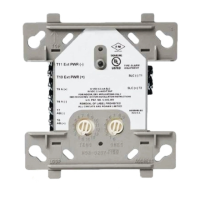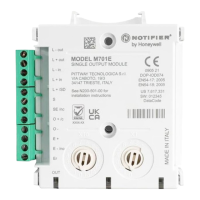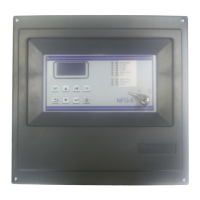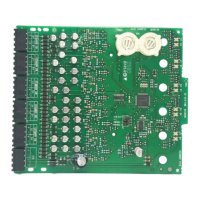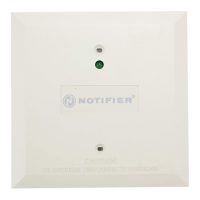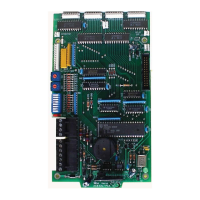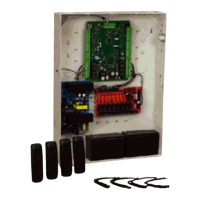92 SCS Series Manual — P/N 15712:L 7/18/16
The SCS⁄SCE Building-Specific Operation and Programming Examples
All of the protocol points with software type IDs must be entered in FACP memory. Refer to Table 3.13 for protocol point software type IDs
and Section 2.4.4, Full Point Programming, for instructions on programming EIA-485 protocol points.
After programming of all protocol points is complete, the programming associated with the control and monitor modules must take place,
including software type IDs, Control-By-Event, and protocol point mapping. This will be accomplished by using full point programming.
Before beginning full point programming, determine all parameters associated with each control module and monitor module. Worksheet 3
will assist in the organization of information required for programming control and monitor modules.
The software type IDs for control and monitor modules are listed in Table 3.14. For this example, all control modules require the software
type ID CMXS and all monitor modules require the software type ID NOA.
Once the software type IDs have been determined, Control-By-Event (CBE) programming must be tackled. Before programming the FACP
with CBE, some thought must be given to a smoke control scheme.
• How will the smoke control system be activated?
• What devices will be activated first, second, etc.?
• What detectors will activate what parts of the smoke control system?
For this example, we have six smoke detectors, a waterflow switch, and one manual pull station per floor, where each floor is designated as
a smoke control zone. Upon activation of a smoke detector or a waterflow switch, the system should pressurize the stairtower and elevator
hoistway, open the supply dampers on all non-fire floors, open the exhaust dampers on the fire floor, and turn on the supply and exhaust fans.
Supply and exhaust fans should not be turned on until all dampers required to be open have been opened and all dampers required to be
closed have been closed. After the first fire alarm, subsequent fire alarms will not initiate any further Control-By-Event functions for smoke
control elements within the system. Additional control after the first fire alarm requires manual intervention at the SCS⁄SCE.
Upon activation of a pull station, the system should only pressurize the stairtower and elevator hoistway. The zoned smoke control must not
be activated from manual pull stations because there is no guarantee that the pull station activated is on the fire floor.
Point Assignments: classification type ID Point Assignments: classification type ID
33 (CON
ON⁄OP
) needed ACON 49 (CON
ON⁄OP
) needed ACON
34 (CON
OFF⁄CL
) unneeded - 50 (CON
OFF⁄CL
) unneeded -
35 (VER
ON⁄OP
) needed AMON 51 (VER
ON⁄OP
) needed AMON
36 (VER
OFF⁄CL
) needed AMON 52 (VER
OFF⁄CL
) needed AMON
37 (CON
ON⁄OP
) needed ACON 53 (CON
ON⁄OP
) needed ACON
38 (CON
OFF⁄CL
) unneeded - 54 (CON
OFF⁄CL
) unneeded -
39 (VER
ON⁄OP
) needed AMON 55 (VER
ON⁄OP
) needed AMON
40 (VER
OFF⁄CL
) needed AMON 56 (VER
OFF⁄CL
) needed AMON
41 (CON
ON⁄OP
) needed ACON 57 (CON
ON⁄OP
) needed ACON
42 (CON
OFF⁄CL
) unneeded - 58 (CON
OFF⁄CL
) unneeded -
43 (VER
ON⁄OP
) needed AMON 59 (VER
ON⁄OP
) needed AMON
44 (VER
OFF⁄CL
) needed AMON 60 (VER
OFF⁄CL
) needed AMON
45 (CON
ON⁄OP
) needed ACON 61 (CON
ON⁄OP
) needed ACON
46 (CON
OFF⁄CL
) unneeded - 62 (CON
OFF⁄CL
) unneeded -
47 (VER
ON⁄OP
) needed AMON 63 (VER
ON⁄OP
) needed AMON
48 (VER
OFF⁄CL
) needed AMON 64 (VER
OFF⁄CL
) needed AMON
NOTE:
1. Duct detectors must not be used to activate the smoke control system.
2. Manual pull stations must not be used to activate zoned smoke control, but can be used to activate stairtower pressurization or elevator
hoistway protection.
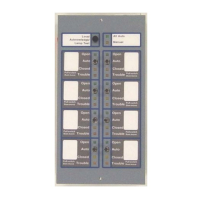
